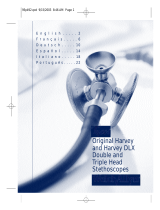
11
PA MODE
An external loud speaker can be connected to the unit by
the PA jack plug situated on the back panel PA.SP. (D). The
PA volume is regulated by VOL knob (1). “PA” is displayed.
ROGER, SCAN, MEM, VOX are not allowed in PA mode. If the
user set on PA mode while SCAN function, instant channel
9/19 mode or WX mode, these are canceled.
The CB message received will be directed towards the PA
speaker and be amplified.
The message transmitted into the microphone will be di-
rected towards the PA speaker and be amplified. “PAon”
is displayed, Meter numbers indicate signal level.
LOCK (long press)
Allows to lock all the keys on the front panel. if the KEY BEEP
function is on, an error beep sounds when a key is used.
A long press on LOCK key (10) activates/deactivates the
LOCK function. appears on the display when the function
is activated.
Transmission (microphone or vox) and reception remain
active.
•VOX (•F/MEM + short press)
The VOX function allows transmitting by speaking into the
original microphone (or in the optional vox microphone)
without pressing the PTT switch (12). The use of an optional
vox microphone connected to the rear panel of the trans-
ceiver (E) disables the original microphone.
Press one time •F/MEM key (6) and short press •VOX key
(10) in order to activate the VOX function. “VOX” appears
on the display. Repeat the key combination to disable the
function. “VOX” disappears.
•VOX SET (•F/MEM + long press)
Press one time the •F/MEM key (6) and press during 1 second
•VOX key (10) in order to activate the function VOX SETTING.
Three adjustments are possible: Sensitivity / Anti-vox level
/ Vox delay time . Press shortly •VOX (10) in order to go
to the following adjustment (looping , , ).
The display shows the type of adjustment followed by its
level.
- Sensitivity : allows the adjustment of the microphone
(original one or optional vox) for an optimum transmission
quality. Adjustable level from 1 (high level) to 9 (low level)
by pressing s/t (4/5) or UP/DN (14/15) keys . corresponds
to the Sensitivity Level.
- Anti-Vox
: allows disabling the transmission generated by
the surrounding noise. The level is adjustable from 0 (Off) to
9 (low level) by pressing s/t (4/5) or UP/DN (14/15) keys.
corresponds to Anti-vox Level.
- Delay time
: allows avoiding the sudden cut of the trans-
mission by adding a delay at the end of speaking. The
level is adjustable from 1 (short delay) to 9 (long delay) by
pressing s/t (4/5) or UP/DN (14/15) keys. corresponds
to Delay Time.
Once the adjustments are done, short press •F/MEM key
(6) key in order to quit the Vox Adjustment mode.
When VOX SETTING is done the VOX function is automati-
cally ON. “VOX” appears on the display.
11) 6 PIN MICROPHONE PLUG
The plug is located on the front panel of the transceiver and
makes the setting of the equipment into the dashboard
easier.
See cabling diagram page 60.
English




















 Welch Allyn Tycos Harvey Original Double Head Manual do usuário
Welch Allyn Tycos Harvey Original Double Head Manual do usuário